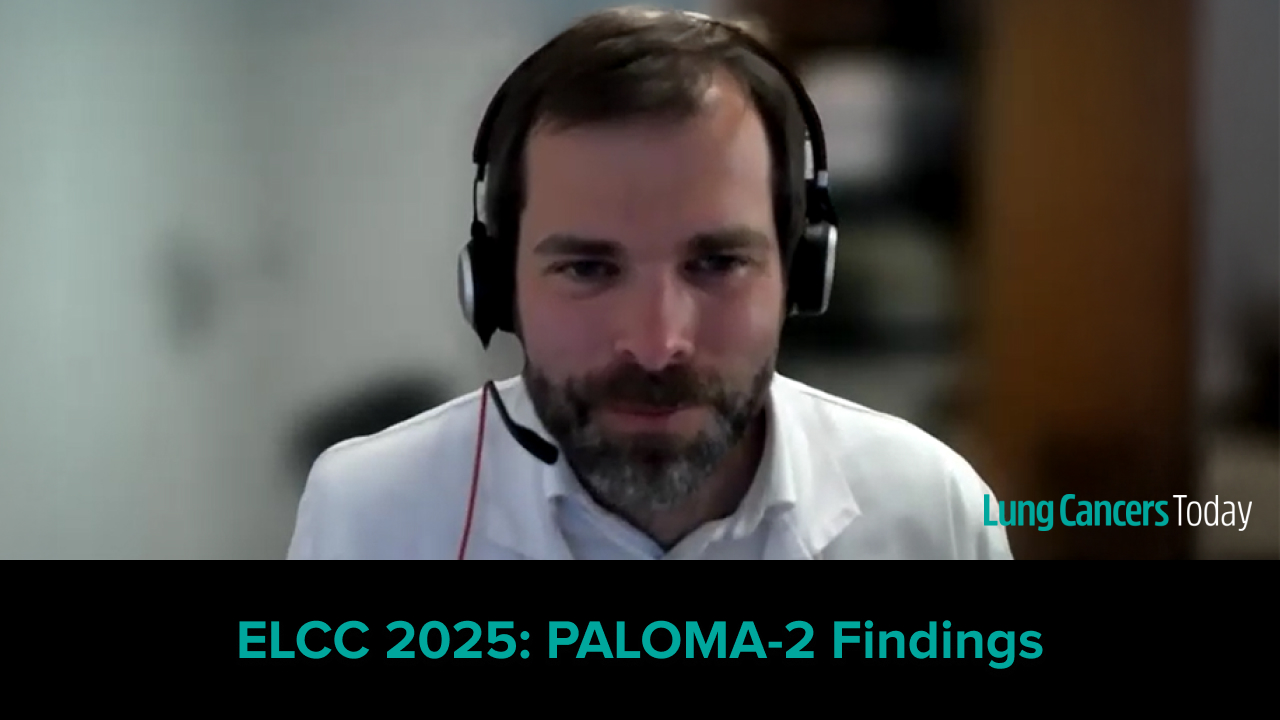Changing Paradigms: Dr. Liu Discusses Implications of MARIPOSA OS Data
By Stephen V. Liu, MD, Cecilia Brown - Last Updated: February 28, 2025Stephen V. Liu, MD, of the Georgetown University School of Medicine and Georgetown’s Lombardi Comprehensive Cancer Center in Washington, DC, joined Lung Cancers Today to discuss the implications of the recently reported overall survival (OS) benefit in the phase 3 MARIPOSA trial.
The study met its pre-specified secondary endpoint of OS by showing that first-line amivantamab-vmjw (RYBREVANT®) plus lazertinib (LAZCLUZE™) improved OS compared with osimertinib (TAGRISSO®) in patients with locally advanced or metastatic non-small cell lung cancer (NSCLC) with EGFR exon 19 deletions or L858R substitution mutations.
This new information on OS in the phase 3 trial also brings new questions and considerations, Dr. Liu explained.
“Now that we know that this MARIPOSA combination regimen leads to a significant improvement in survival, we need to take a hard look at these data: Are there some groups that derived more benefit from the combination therapy?” Dr. Liu said. “If patients stopped one component of treatment, did they still achieve that long-term benefit? Is amivantamab—which does add toxicity and time, but clearly efficacy as well—is that something that needs to continue that entire time?”
One of the challenges with addressing this type of question is the rapid pace of advancement in the field, which means that treatment standards and options may change between the inception and maturation of a trial.
“When we have a front-line regimen, we think of how we use these in different sequences, but before you know it, we have new drugs around the bend, we have antibody-drug conjugates emerging, we have different bispecific antibodies emerging,” Dr. Liu said. “The subsequent therapies are rapidly evolving. That’s why it can be difficult to plan a trial with built-in crossover because by the time that study matures, the second-line treatment options, the standard of care, might have changed and the field looks very different.”
This is “why we place a lot of stock in survival and seeing that patients are living significantly longer with combination therapy” in the MARIPOSA trial, he explained.
It’s also important to take the subcutaneous formulation of amivantamab into account when considering the implications of MARIPOSA data.
“In the future, we expect the subcutaneous formulation to be available. This will decrease infusion time, improve patient satisfaction and quality of life,” Dr. Liu said. “In one study, the PALOMA-3 trial, we did see the suggestion that had an impact on efficacy and survival as well. We are eagerly anticipating the subcutaneous infusion as a more patient friendly way to deliver this this type of treatment.”
Beyond this specific population of patients who have locally advanced or metastatic NSCLC with EGFR exon 19 deletions or L858R substitution mutations, the OS results from MARIPOSA have broader implications, Dr. Liu said.
“We look at these combination therapies as ways to improve outcomes for patients with EGFR-mutant lung cancer. But as we take a step back, we really want to see what similar approaches help in other, similar disease types, other types of EGFR mutations, other type of alterations altogether,” Dr. Liu said. “Should we be exploring more aggressive combinations in ALK, RET, BRAF, for example? Are there opportunities there to achieve similar survival gains?”
It’s important to recognize that osimertinib is “not just used in the stage IV setting,” Dr. Liu said. “We use it after chemoradiation, we use it after surgery. Are those settings where more aggressive combination therapy, at least for a brief time upfront, could also pay dividends in the long term? This could change a lot of different paradigms and have a lasting impact.”
Hear further insights from Dr. Liu in this companion video.







 © 2025 Mashup Media, LLC, a Formedics Property. All Rights Reserved.
© 2025 Mashup Media, LLC, a Formedics Property. All Rights Reserved.